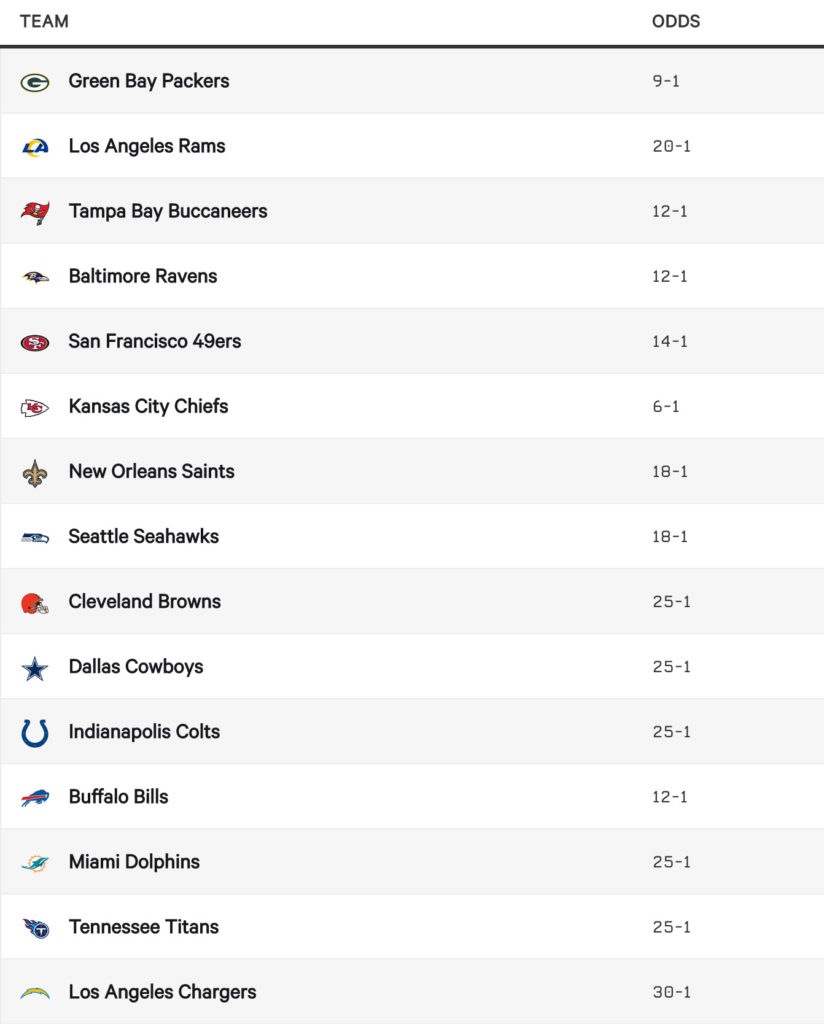For anyone new to betting, there are a many aspects on a bet sheet or an app that will be confusing or you may see for the first time.
One of the most important things to understand is how betting odds work and what they mean.
To start, odds are presented in a few different ways and the numbers mean drastically different things depending on what system the sportsbook is using. There are three common ways for odds to be presented: American odds, fractional odds, and decimal odds.
American Odds
American odds can be challenging to iunderstand at first. They are not as straight-forward as decimal or fractional odd betting (see below).
For starters, American odds base themselves around $100 and how they relate to $100 varies depending on whether the bet is favored or not. For favored bets, the bet odds will begin with a negative number and they tell you how much you need to bet to win $100.
Let’s say the odds for a game are -110, a common number for a bet involving a spread, you would need to bet $110 to win $100. But, if your odds are -200, you would need to bet $200 to win $100.
Remember though, bets don’t have to be that size, but that proportion will scale up or down. A $10 bet with -200 odds would give you $5 plus your original $10 bet back.
Odds with a plus sign are underdog bets. Plus odds tell you how much profit you will get on a $100 bet. A $100 bet with +200 odds nets you $200 profit plus your original $100 bet. If you bet $20, you would profit $40.
A REAL WORLD EXAMPLE

In this example game, both the New York Knicks and Lakers are -110 if you bet them against the spread. The same goes for either side of the total (over/under). The moneyline is where it differs. A $250 bet on the Celtics on the moneyline, which means if they win the game by any margin the bet wins, would win $100 (plus a return of the original $250 bet). A $25 bet would win $10.
The Lakers are the underdog so they have plus odds. A $100 bet would win $280, in addition to the original $100 bet.
Fractional Odds
Decimal and fractional odds are more common outside the United States, but can be found in some American sportsbooks as well. But both principles are fairly similar.
Fractional odds are, as the name indicates, displayed as fractions, like 3-1 or 7-4. Multiplying a bet amount by the fraction, will show the profit. Betting $10 with 3-1 odds will give you a $30 profit plus your $10 back.
Betting $10 with 7-4 odds would net $17.50 plus the original $10. Multiply the $10 by the numerator, which in this case is seven, then divide by the denominator, which is four. That gives you 70 divided by four, or 17.50.
Favorite bets will have a denominator that is bigger than the numerator such as 1-2 or 2-5. Underdog bets will have the numerator larger than the denominator, like in the example above.
In The U.S., fractional odds are most commonly used in futures betting where almost all the odds have a denominator of 1, making them easier to understand.

Decimal Odd Betting
Decimal odds are shown as one number, which is the amount a winning bet would collect on a $1 bet. If the odds are listed as 6, a winning bet would receive $5 profit and the original $1 bet. Anything between 1 and 2 is a favorite bet and 2 is an even money bet.
These types of bets are most common outside of the United States where the fractions used in fractional odds get a bit challenging. For example, it’s fairly common to see American odds of -115, but that converts to 20-23 in fractional odds.
If you try to do the math of the return on a $10 bet with 20-23 odds, it’s not so easy, is it?. The decimal odds would be listed at 1.87, which would make for much easier math on this $10 bet. Multiply the odds by the bet and you get the return that would include the original bet. Much easier, right? The return would be $18.70. This is a case where decimal odds can be better.

